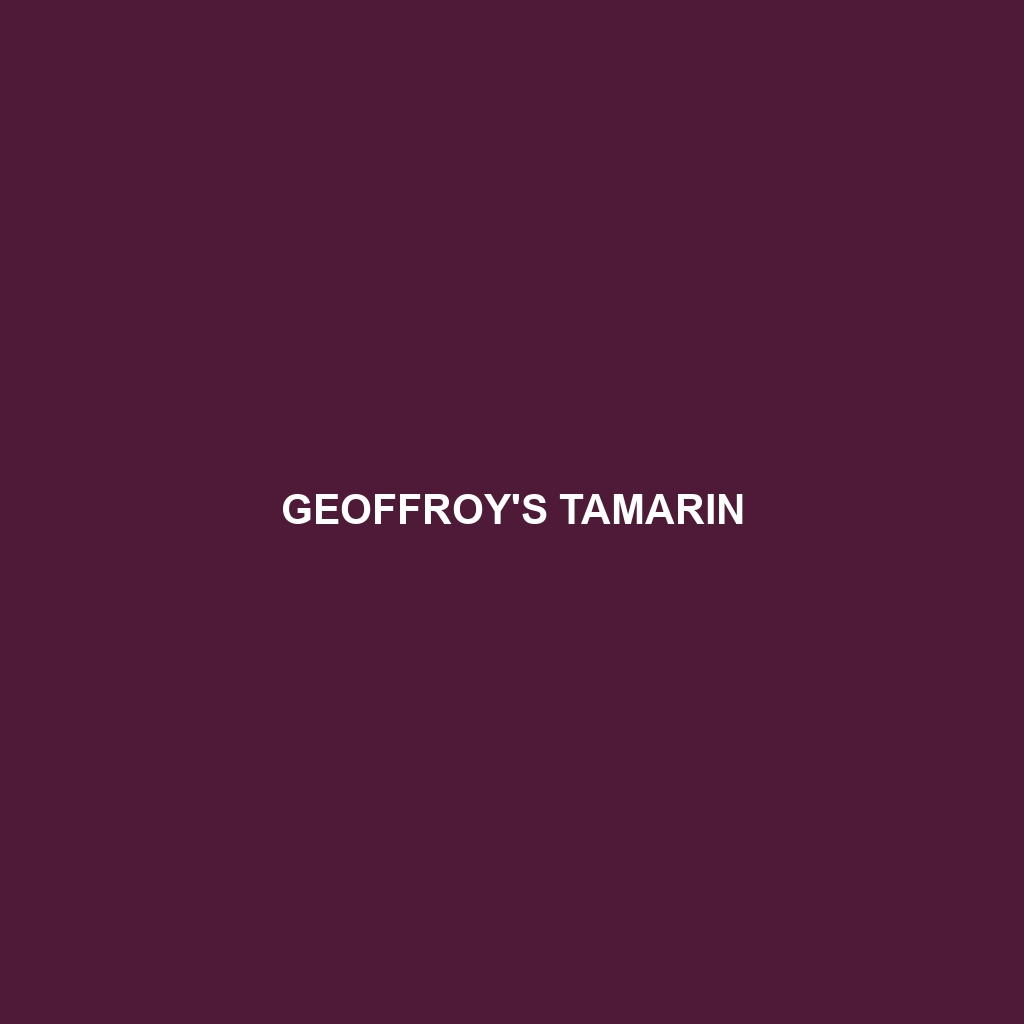Species Description: Geoffroy’s Tamarin
Common Name: Geoffroy’s Tamarin
Scientific Name: Saguinus geoffroyi
Habitat
Geoffroy’s Tamarin, native to Central and South America, is primarily found in the lowland tropical rainforests of Costa Rica, Panama, and western Colombia. Preferring dense, humid environments, these primates thrive in secondary forests and areas with abundant tree cover, which provide essential shelter and foraging grounds.
Physical Characteristics
Geoffroy’s Tamarin is a small primate, typically measuring between 21 to 28 centimeters in body length and weighing around 0.5 to 0.9 kilograms. They are easily recognizable by their striking coloration, featuring a predominantly black and white coat with a distinctive orange or reddish-brown patch on their back. Their expressive, large eyes and long, curly tails contribute to their unique looks, making them a favorite among wildlife enthusiasts.
Behavior
Geoffroy’s Tamarin is known for its social nature, often found in groups of up to 20 individuals. They exhibit a range of behaviors, including vocalizations and grooming rituals that strengthen social bonds. Highly agile, these monkeys are excellent climbers, leaping effortlessly between branches in search of fruit and insects. Their inquisitive and playful demeanor adds to their charm, attracting both researchers and casual observers alike.
Diet
Geoffroy’s Tamarin has an omnivorous diet that primarily consists of fruits, flowers, and insects. They are known to forage on nectar and occasionally consume small vertebrates. Their feeding habits play a crucial role in their ecosystem, aiding in seed dispersal and contributing to plant diversity.
Reproduction
The breeding season for Geoffroy’s Tamarin typically occurs between November and April. After a gestation period of approximately 140 to 145 days, females usually give birth to twins, which is common among tamarins. The parental care is shared among the group, highlighting their cooperative breeding behavior.
Conservation Status
Currently, Geoffroy’s Tamarin is classified as vulnerable by the International Union for Conservation of Nature (IUCN). Habitat loss due to deforestation and human encroachment poses significant threats to their populations, making conservation efforts vital for their survival.
Interesting Facts
Geoffroy’s Tamarin is named after the French zoologist, Étienne Geoffroy Saint-Hilaire. These monkeys are also known for their remarkable vocalizations which include a variety of whistles and chirps, used for communication within their social groups. In addition, they are remarkable for their agility, being able to leap up to five meters between branches.
Role in Ecosystem
As a vital part of their rainforest ecosystem, Geoffroy’s Tamarin plays a crucial role in seed dispersal. Their diet of fruits and flowers not only helps maintain plant populations but also supports other species in the ecosystem. Additionally, they serve as prey for larger predators, making them an integral component of the food web.
